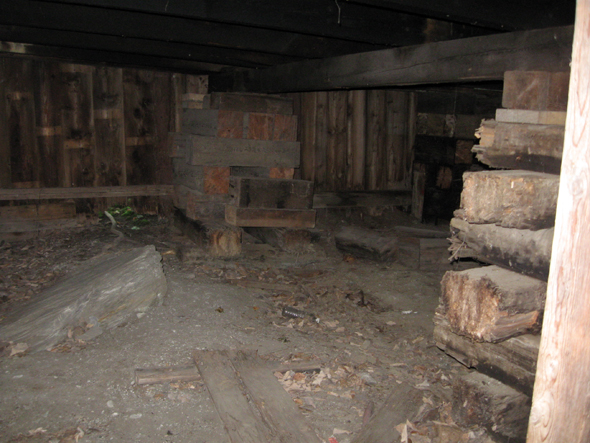 |
| A D&H train is re-routed over the White River Division. Just ahead of the caboose is a good looking D&H milk cars. |
D&H Milk Car No. 827
The Prototype
The D&H milk car was a typical eastern area car. It was similar to those used on the Rutland Ry and NYC. These D&H milk cars are part of a group built in the company shops in 1906-1907. Plans of a D&H milk car can be found in the February 1986 issue of RMC. I believe that D&H car #848 seen in the drawing is of the car that sat in Tunnel, NY for many years as work car #34226. The same RMC issue also has a photo of milk car #827 which is a similar car. A photo of the Tunnel, NY ex milk car can be found in the June 1974 RMC.
My model of D&H 827 was one of 67 cars in the D&H fleet which had been numbered 800-866. The cars are not all the same but similar. To model one it is best to use a prototype photo. 848 had a steel underframe near the end of its use but also retained its truss rods. At some point ladders to the roof walk were added.
I am not sure if any D&H milk cars have survived. The last photo I did see was of D&H #30043 at North Creek, NY in 2002.
 |
| F&C kit #2001 of a D&H milk car is found in use on the White River Division. |
The Model
My D&H milk car model was built many years ago from an F&C ( Funaro & Camerleno) kit. This was one of the early era crude kits that are a solid block which needed a lot of sanding on the bottom to even things out. Many of the details also needed replacing. The line of F&C kits have greatly improved from these 1980s offerings.
I don't recall all I did but roof walks are styrene strips. The original walkway was very thick. I believe I used the end walks from the kit. I used some of the included wire for the hand holds. Kadee pockets and #5's are used. The end ladders are from my parts box. I bend grab irons for each end and used a passenger car hose set. I don't recall the make of the metal stirrups used, but Tichy makes some nice ones that one could use today. The trucks are Athearn or Roundhouse express reefer trucks taken from an unused kit. I used the included under body details adding a small piece of chain. Most early era photos and plans view low level brake ratchet and no end and side ladders. As I model in the 1950's I updated mine with ladders and a high brake wheel. The brake wheel and brake wheel details I think came from a Details Associate parts package.
The roof, under body and trucks are painted my usual Floquil grimy black. The sides got a coat of Floquil Pullman Green. I don't recall if the decals were included or not. At that time I was using a lot a dry transfer lettering that I found at stationary stores. The milk car got a coat of flat finish and some light air brush weathering.
I am happy with my D&H milk car although it does not get added to my trains all that often. It is though a nice example of a Rutland-NYC alternate...George Dutka
 |
| An overhead view of D&H milk car. The roof walks were added along with the ladders for a later" in service" date. When build the roof had small circle vents, and hand holds grabs on the ends and sides, no ladders. The brake ratchet was lower down also. |
 |
| Numerous NYC, Rutland and D&H style milk cars can be found in this yard photo. They all have a similar appearance. |
 |
| D&H builders photos shows the row of openings along the bottom while other D&H milk cars had three on each end as seen on the F&C kit model . |
 |
| D&H milk car plans |




































